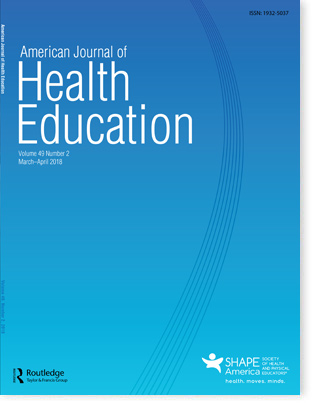 AJHE Table of Contents
AJHE Table of Contents
Physical Activity and Psychological Correlates During an After-School Running Club
David Kahan and Thomas L. McKenzie
 Children between the ages of 6 and 11 years should be physically active at least 60 min/d with most accrued in the form of moderate-to-vigorous physical activity (MVPA).1 Less than 45% of U.S. children of this age, however, attain at least 60 minutes of MVPA on at least 5 d/wk. Of concern is that most children lose out on the health-enhancing benefits of regular physical activity (PA), which include cardiorespiratory fitness, healthy body weight, and optimal body composition. Physical inactivity tends to track from youth to adulthood and is associated with some 35 diseases/conditions that afflict persons over their life course. Schools have long been cast as an important and cost-effective resource for PA promotion. School-based PA interventions have been shown to increase the proportion of children engaging in MVPA at school, with studies showing an overall increase in daily MVPA of between 5 and 45 minutes. Physical education (PE) plays a central role in the comprehensive school physical activity program model, but evidence suggests that elementary schoolchildren often fall short of reaching the intensity target of quality PE (ie, 50% of lesson in MVPA). This shortfall is compounded by weak PE policy (eg, only 19 of 50 states have time requirements for elementary school PE) and the average daily dosage is nearly 10 minutes shorter than recommended (ie, 20.7 minutes vs 30.0 minutes). Thus, it is fair to describe PE as “the pill not taken.”
Children between the ages of 6 and 11 years should be physically active at least 60 min/d with most accrued in the form of moderate-to-vigorous physical activity (MVPA).1 Less than 45% of U.S. children of this age, however, attain at least 60 minutes of MVPA on at least 5 d/wk. Of concern is that most children lose out on the health-enhancing benefits of regular physical activity (PA), which include cardiorespiratory fitness, healthy body weight, and optimal body composition. Physical inactivity tends to track from youth to adulthood and is associated with some 35 diseases/conditions that afflict persons over their life course. Schools have long been cast as an important and cost-effective resource for PA promotion. School-based PA interventions have been shown to increase the proportion of children engaging in MVPA at school, with studies showing an overall increase in daily MVPA of between 5 and 45 minutes. Physical education (PE) plays a central role in the comprehensive school physical activity program model, but evidence suggests that elementary schoolchildren often fall short of reaching the intensity target of quality PE (ie, 50% of lesson in MVPA). This shortfall is compounded by weak PE policy (eg, only 19 of 50 states have time requirements for elementary school PE) and the average daily dosage is nearly 10 minutes shorter than recommended (ie, 20.7 minutes vs 30.0 minutes). Thus, it is fair to describe PE as “the pill not taken.”
Of growing interest, then, is the role that after-school programs (ASPs) might play in helping children reach the recommended 60 min/d of MVPA.14-16 This focus is particularly relevant in light of findings that children do not compensate for the lost PA minutes on days they do not have PE. The National AfterSchool Association (NAA) has set both time and intensity standards for ASP PA—at least 20% of ASP time or 30 minutes of PA time during which students engage in MVPA at least 50% of the time—which equates to a minimum of 15 MVPA minutes per session.In California, the location of the present study, state guidelines recommend that ASPs provide a minimum of 60 MVPA minutes during a 3-hour session
To read the rest of this article,
click here to download a pdf.